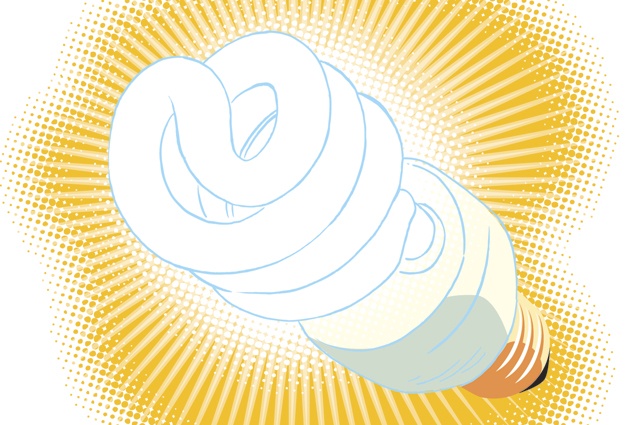For more than a century, the incandescent lightbulb has been the global standard for electric lighting. But those days are numbered as more efficient lighting options become available. In fact, U.S. sales of some incandescents will be phased out by 2014 under the so-called, federally mandated “lightbulb law.”
But concerns have been raised about the safety and expense of the most common alternate lighting technology—compact fluorescent lightbulbs (CFLs)—which typically last longer than equivalent incandescent bulbs and use a fraction of the energy.
Considering that about 12 percent of home energy use is devoted to lighting, according to the U.S. Department of Energy, switching to CFLs can provide savings.
Here are some common concerns about CFLs and some facts that may allay them:
CFLs cost too much.
The price of a CFL, which went for $9 or more a decade ago, has dropped, although one of those curly CFLs still costs substantially more than an incandescent. But consider the energy savings: They use about 25 percent of the electricity to provide the same amount of light. So despite paying more up front, users will save in the long run with reduced electricity costs.
CFLs don’t last as long as incandescents.
Consumer Reports has tested an array of CFLs and found that they lasted five to 10 times as long as incandescents. Many bulbs have warranties, so if one doesn’t last as long as advertised, consumers may be able to get their money back if they have their receipt.
Putting CFLs in the trash can contaminate the environment, and recycling programs don’t exist.
Unfortunately, the approximately 4 milligrams (mg) of mercury contained in a typical CFL can escape into the environment if the bulb is thrown in the trash. But some retailers, including The Home Depot and Lowe’s, now have CFL-recycling programs (not all stores participate). And many counties in Texas have disposal programs that accept CFLs. (Find a recycling option in your area.)
Popular Mechanics magazine has calculated that the electricity used to power a CFL over its 7,500-hour life will be responsible for 3.5 mg of mercury from power-plant emissions. The equivalent emissions from using incandescent lighting are about 13.2 mg. This means that even if a CFL breaks and its mercury content escapes into the atmosphere, it will have released about 6 fewer milligrams of mercury over its lifetime than an incandescent.
The bulbs emit a harsh, bluish light.
The spectrum of light from early CFLs was a white-blue that many people found unappealing. But manufacturers now offer bulbs that give off a warmer light, similar to that emitted by incandescent bulbs.
——————–
Kevin Hargis is a Certified Cooperative Communicator.


